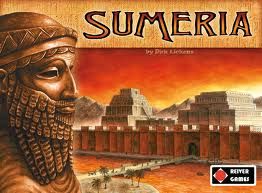With two “competing” stars in the sky, a rivalry seems to have formed between the Sun cults and the Saturn cults. The Egyptian Sun cult was the basis for Christianity, with “The Son” (Sun) Jesus as its “risen savior” and “the light of the world”; who symbolically "dies" and is "reborn" every year. Part of Christianity pits “The Son” against “Satan” (Saturn). However, the Roman Emperor Constantine—as well as the early Catholic Church—took the Christian doctrine and “Saturnized” it so to speak. They didn’t do this because they were somehow evil, but because they were dedicated to Saturn… then a dwarf star. In other words, the Sun rises every day, and is the light of our world; while Saturn no longer emitted any light, and was now symbolically “dark”… “light vs. dark.” Another thought, perhaps a nova-like reaction from the dying Saturn could have melted the glaciers and caused a great flood. This could have sunk Atlantis and other civilizations, and put an end to The Golden Age?
Islam
and Judaism were clearly formed from earlier Saturn cults. The Saturnian
hexagram, known today as the Star of David, is a symbol of Saturn. It also
represents the divine masculine (upward triangle) and the divine feminine
(downward triangle). Even some mosques feature Saturnian hexagrams on the
front. The geometric properties of this symbol equal 666. However, this
initially wasn’t intended to be “evil” at all. Only later, after Saturn had
fizzled out, were these symbols presented as being dark or evil by the church.
This nitpicking went both ways as shown in the above link. There were people
who in modern times did take on Satanism in a negative form. I’m generalizing,
since there are competing camps even within all of these religions. To try to
sift through the “good guys vs. bad guys” within these religions would perhaps
take me down a rabbit hole that I don’t wish to go down right now.
Unfortunately, the positive energy elements tend to cover for the negative
energy elements within their own religion. That’s part of human nature.
The
people of the pre-Abrahamic Middle East were primarily Mediterranean, not
Semitic. So in other words, Indo-European. Also, north of the Himalayas was the
original Teutonic homeland. With some of these people migrating southward in
ancient times, they were also part of this Sun-Saturn cultural and religious interaction. Their spirituality revolved around the "Black Sun," which could have either been the Sun, or
it perhaps could have really meant Saturn. It’s not clear to me. Saturn
seemingly would have been their star, long shining in the northern sky, and now
“a black sun.” Saturn people always have to be the bad guys, right?; or is this
some kind of grand global theater of occultic history? The Germanenorden
(Teutonic Order) apparently had great knowledge of at least this early Teutonic
history. It’s possible that the two-star system of The Golden Age made it
possible for people to live on the North Pole, or part of it. Therefore the
mythical Hyperborea could have existed, perhaps without seasons, and possibly illuminated twenty-four hours a day (day and dim). The ancient city of Arkaim likely was a Teutonic settlement. Also
apparently there was a Saturnian Society in Germany, which later influenced
the National Socialists, and eventually migrated to the United States and helped form
NASA. We could probably at least say that it’s very likely that the early
Teutonic religion was Saturnian.
We
can only speculate on Atlantean civilizations, but Saturnian culture can at
least be traced back to Sumeria. Another highly influential culture was the
Phoenician civilization. The Phoenician-Caanenite religion and culture was most
certainly over-the-top Saturnian! The God Saturn was called “El.” Apparently,
during The Golden Age, Saturn emitted a certain subtle “purple haze” of light.
The Phoenician priesthood (“the Elders”) wore purple robes. They used the Saturnian
hexagram, the Star of Saturn. They were, in fact, “Satanists” using the ancient
meaning of the word. The original Hebrew language has a common origin with the
Phoenician-Caanenite language. That doesn’t mean they were the same people, but
the powerful nation of Phoenicia-Caanen occupied a large area in the Near East.
The
Saturnian God “El” as a rootword, is present in many languages, including
English. It’s especially present in words dealing with aspects of authority,
government, and education. For example, elder, elect, elected, elite, elevator,
elevate, temple (tem-pel), bible (bi-bel), bell, steeple (ste-pel), cathedral
(cathe-drel), electricity, element, elementary, etc. Phoenician temples
featured “two towers” apparently, and are likely related to the Egyptian obelisk
(o-bel-isk). The owl (ow-el) was a powerful symbol in the Babylonian
(Ba-bel-on) culture, symbolized by their God Molech (Mo-el-ech); and they went
on to construct the Tower of Babel (Ba-bel). Along with the Tower of Babel,
there were many Biblical words which can be traced back to “El.” Israel
(Is-ra-el), Elohim, Eli, Emanuel, Mary Magdalene (Mag-del-ene), etc. The Hebrew-originated Christian name Rachel comes to mind as well. I’m not certain if the
Near Eastern God Baal (Ba-el) is another manifestation or name of the God El or
not. Then there’s the word for God in Islam… Allah (A-el-ah). The Phoenicians traveled and traded far and wide, including England, so I wouldn't underestimate many other words as well.
.




No comments:
Post a Comment